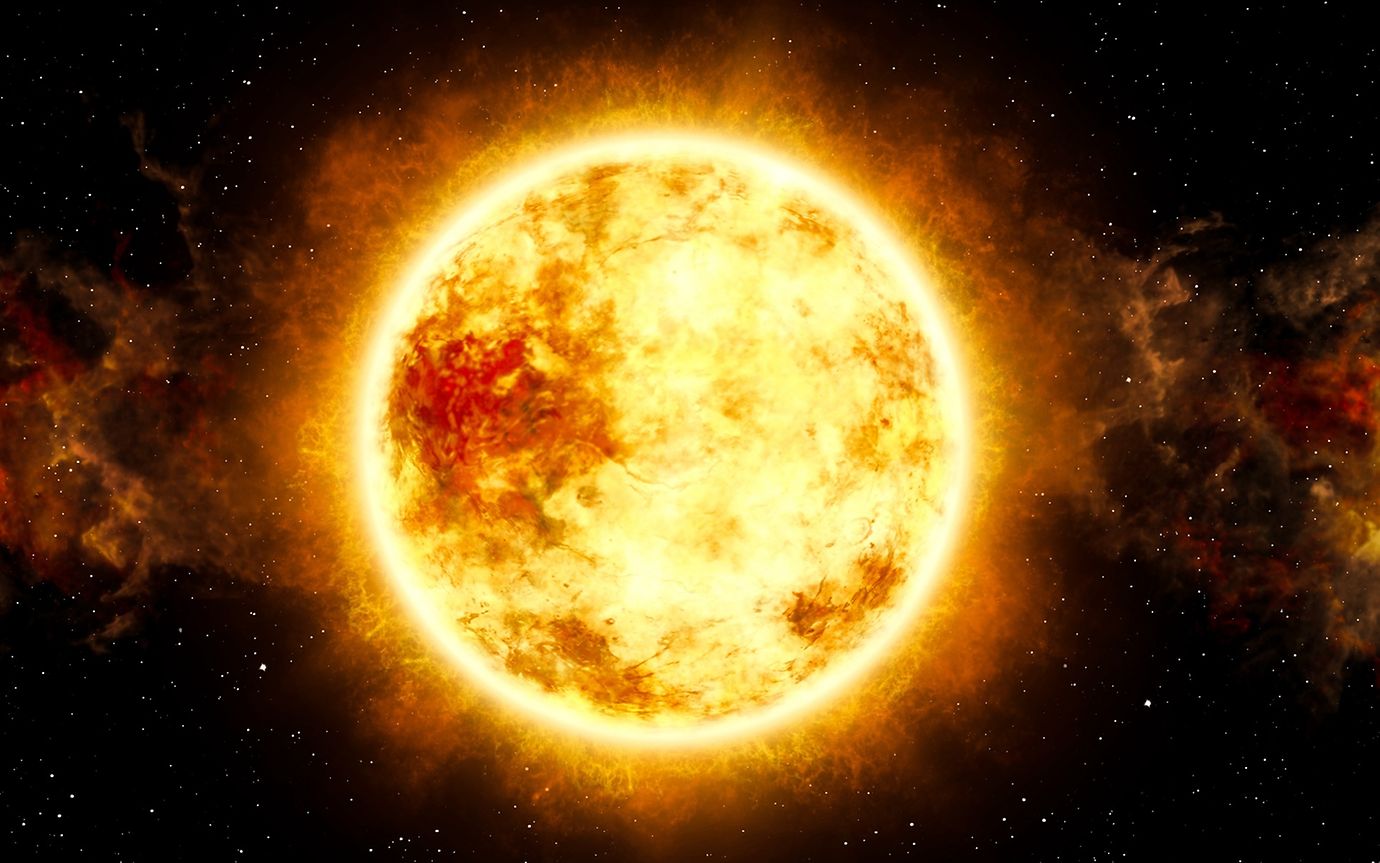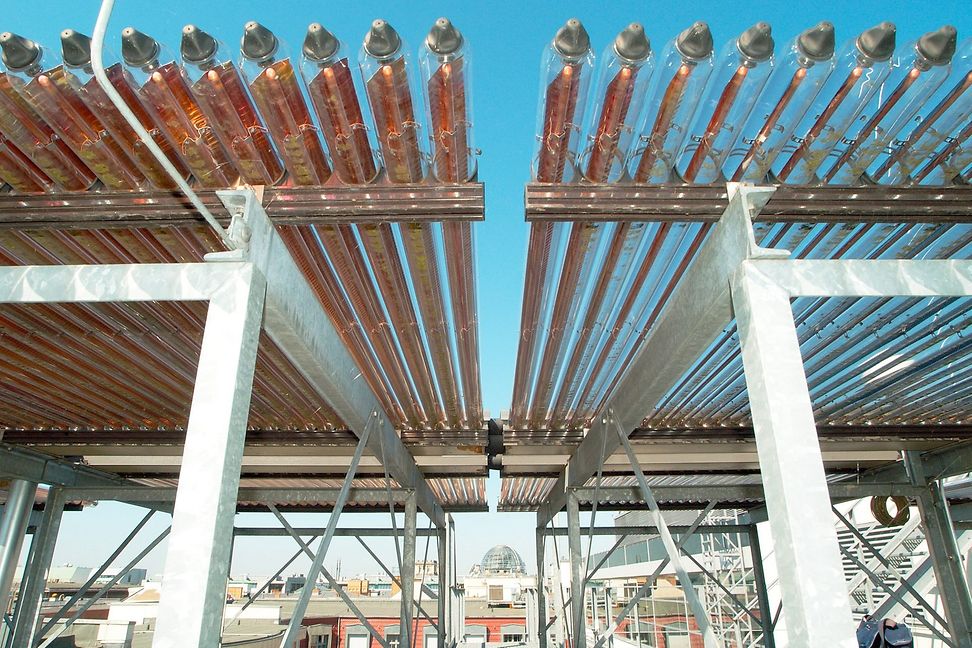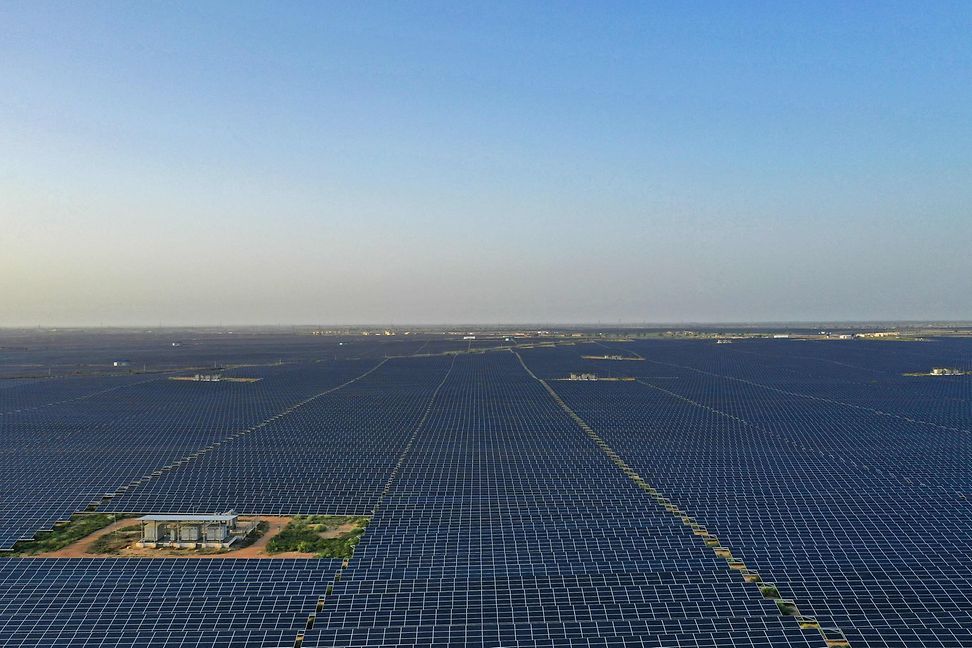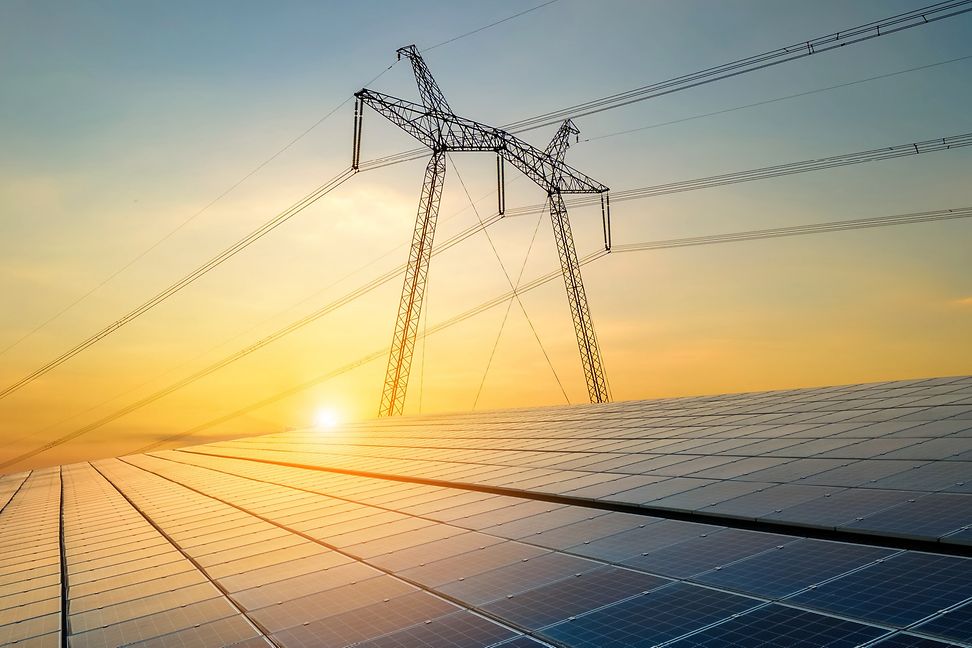在此处更改您的语言和 LGT 位置。
私人客户的数字平台
登入 LGT 智能银行
金融中介机构的数字平台
登入 LGT 智能银行 Pro
常见问题解答 (FAQ)
LGT 智能银行帮助
常见问题解答 (FAQ)
LGT 智能银行专业版帮助
Producing vast amounts of cheap, clean energy, the sun is critical for global decarbonisation. But solar power also offers something more: attractive investment opportunities in everything from photovoltaics and batteries to the transmission lines and transformers that form the backbone of the world's power systems.

Formed about 4.5 billion years ago, the sun supports all life on earth. It triggers photosynthesis, enabling plants to grow. It allows humans to regulate our body temperature and to generate the vitamin D needed for strong bones. And now, as the world races to decarbonise, it offers a cheap and clean source of energy that can help us meet our global net-zero goals.
While the growth of solar power has been rapid, its share of the world's energy supply remains tiny. In 2022, the International Energy Agency (IEA) estimated that solar photovoltaic panels accounted for just 4.5 % of global electricity generation. Yet the sun produces 5000 times more energy than the world needs. The challenge is to scale up the proportion of this vast power supply that we use.

Solar technology has several advantages over other forms of renewable energy. For a start, the cost of photovoltaics has fallen rapidly in recent years. In fact, in many countries, according to the IEA, it is now the cheapest form of utility-scale electricity generation. Technical innovation is also improving the performance of solar panels: reducing the resources consumed in their manufacture, and increasing the number of products that can be recycled at the end of their lives.
And while most people associate solar energy with photovoltaic panels, which convert the sun's thermal energy directly into electricity, other promising technologies include solar-thermal power, by which heat-transfer fluids capture the sunlight directed by mirrors onto a receiver. The heated fluid produces steam, which is used to generate electricity.
Solar power is relatively easy to install and is modular, allowing panels to be added to existing systems or infrastructure. While not every location is suitable for solar modules, which require the right inclination and orientation, photovoltaic panels can be fitted on almost everything, from the roof of a house or factory to the top of a pole in order to power security cameras or traffic lights.

"Solar panels can be installed at various scales, from small residential developments to large utilities," says Cedric Baur, an equity analyst at LGT Private Banking. "And you can expand solar in an easy way compared to a wind park, where you need steel towers and additional permits."

For businesses, the case for adopting solar energy can be compelling, as LGT Group has found. In Liechtenstein, for example, at LGT's Bendern service centre, water heated by rooftop solar collectors provides ten to15 % of the facility's annual heating energy requirements. In addition, a photovoltaic system operating on the roof of the Bendern car park generates power equivalent to the annual consumption of 55 four-person homes.
By generating its own renewable power, the company needs to purchase less energy from the grid, explains Ursula Finsterwald, Head of Group Sustainability Management at LGT Group.
"Solar energy is a really cheap source of energy, and the panels themselves have become much more effective and efficient, so there's no reason why you shouldn't use solar today," she says. She also points out that unlike wind turbines, solar panels can be installed on existing buildings.
We want to make an active contribution to the UN Sustainable Development Goals (SDGs). Among other things, the focus is on combating climate change. For this to happen, net emissions must fall to zero. We actively support this target in all our business areas - on the investment side, as well as in advising our clients and in the operation of our business.
Find out more here.
Of course, when it comes to large-scale power generation, solar installations have a significant footprint as they require a lot of land. And in some places, the solar facilities that have been constructed, or are under development, are vast. One of the world's biggest is India's 2.2-gigawatt Bhadla Solar Park, which covers about 57 km2 of desert in western Rajasthan. In China, the 3.5-gigawatt Midong solar power project that went online in June is now the world's largest. It covers over 130 km2 of land in the Xinjiang region.

While in places like deserts, land occupied by solar installations might not have other uses, elsewhere it can compete with essential industries such as agriculture. However, there are ways to reduce solar power's land footprint. For example, on farmland, installing panels vertically, rather than horizontally, means they occupy very little ground, and the space between them can be used for crops or livestock.
As well as demonstrating the sheer scale possible with solar, some of the largest projects also illustrate that while the power source itself, solar radiation, is simple, it takes a complex infrastructure ecosystem to generate the electricity and deliver it to the homes, schools, hospitals, factories, and other places that need it.

In Australia's Northwestern Territory, for example, the AAPowerLink (Australia-Asia Power Link) project will serve customers in the city of Darwin and its surrounding areas. It will also export power to Singapore, which has insufficient land on which to build large-scale solar parks.
The project, which won government approval in August this year, will cover an area of 120 km2, more than twice the size of the Bhadla Solar Park, and involves the construction of solar and energy storage infrastructure, along with 4,300 kilometres of sub-sea cable.
Meanwhile, across the world, ageing grid infrastructure is in dire need of upgrades to enable it to integrate new forms of clean energy into the system. "Most of the grid in the USA and Europe is more than 40 years old and can't absorb the additional renewable generation that is coming online," says Baur.
The IEA estimates that grid infrastructure will need investments of around 680 billion USD annually by 2030 - a giant financing gap that Baur argues provides opportunities for investors. "It's often overlooked as everyone is focused on solar technology itself," he says. "But we also need transmission lines, cables and transformers - all the tools required to integrate clean electricity into the grid."

Plenty of obstacles have to be overcome before solar power generation can reach the scale needed to meet global decarbonisation goals. And some of the solutions lie in the hands of policymakers.

For example, with China dominating the market for panel production, it's hard for European companies to compete. Baur argues that this needs to change. He points to the USA, where tax credits available through the Inflation Reduction Act have boosted local production of solar panels. "It might make it more expensive in the short term," he says. "But the question is: do you want to be dependent on China, or do you want to have at least some of the technology in your own hands?"
Bureaucracy is another burden that policymakers could ease. Gaining approval for new distribution grids, for example, can take several years in many countries. "Permitting times need to be cut," says Baur. "That's very important because if it takes too long, it's not attractive for companies to ramp up production or to build new solar parks."

However, while policy intervention will be important for faster scaling up of solar power, the trajectory is already clear. In 2022, for example, the world added more new solar generation capacity than all the other energy sources of electricity put together, according to the International Energy Forum.
Rising demand for everything needed to support solar's integration into global power systems means investors have a big role to play in accelerating this growth. It's a role that comes with attractive investment opportunities that will also boost diversified portfolios.
"If you want to take on the risk, you might focus on pure renewable plays," says Baur. "But even if you're more risk averse and you want to broaden the scope of your investment, you can have exposure to a lot of interesting and fast-growing companies in the renewable energy sector."
Find more information here.